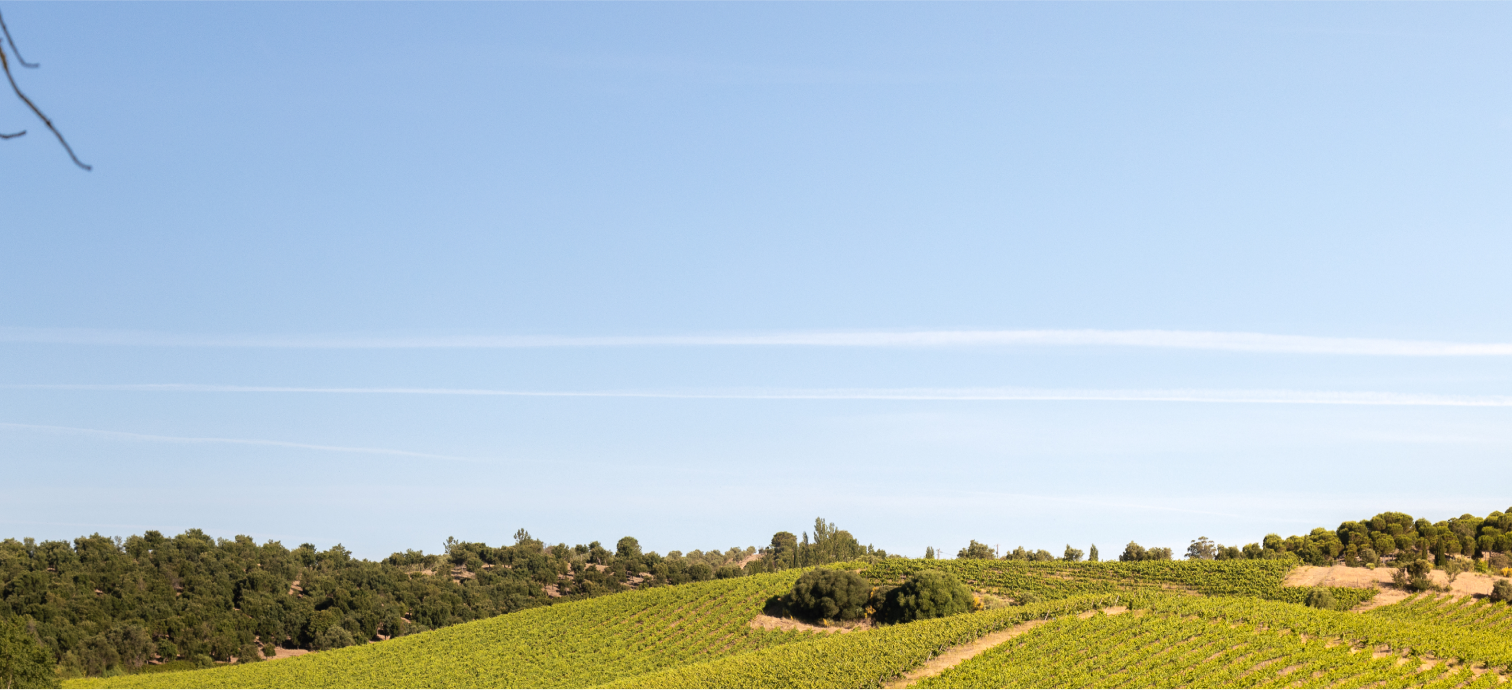
This site-specific mural is created especially for Quinta do Quetzal. With its layers of (hidden) meaning, deep earthy colours, and many symbols, the mural works as a prism through which to see the surrounding landscape of hilltops and vineyards.
The mural echoes the undulating landscape which can be glimpsed through the windows. The rolling hills outside continue in paint, as bulbous green mountains with crowns at their feet and flames on their summits. Once, the nearby hilltops were lit up by fires to mark the border with Spain, a warm glow emanating from this geopolitical place of strife. When the Portuguese king Sebastian disappeared during battle in the sixteenth century, his followers never lost hope for his return. He became a ‘king sleeping under the mountain’, a trope in European folklore which conveys a desire for the past as a changemaker for the present.
As you follow the mural deeper into the building, you encounter geological layers which reflect a rich history. Orange and pink lines bisecting the mural are based on a local building technique which was adopted from the Romans. The two large vases in the lower half of the mural, ‘belowground’, are Talha, vessels used by the Romans to make wine. In this region, the Roman past is another sleeping king, persistently shaping the present from beyond the grave. The Romans introduced vineyards here, and building and fermenting techniques that survive to this day.
Bosmans may point to the endurance of the Roman past and the narrative appeal of Medieval battles; he also shows the relativity of human history. A section with a different colour suggests a hill beneath the soil, referring to the deep history of the region. It could even be seen as another variant of the sleeping king. The immense geological powers that shaped this region are at rest now, but they still determine its climate, terrain, and soil – the gentle slopes, the cork oak, and ultimately, its human presence.
The mural combines local lore with the deep history of the landscape, and present-day quirks. Wary of nostalgia, Bosmans has included two personal symbols that reflect his intuitive, irreverent approach to the past. First, there is the woodpecker, who burrows her way through the dendrochronological layers of a tree, to finally lay her egg in its oldest core. The donkey and the rose are loosely based on The Golden Ass by Apuleius, in which a young man is cursed to become a donkey. It is a compendium of stories about transformation: a nod to Bosmans’ idiosyncratic collection of stories.
Following the mural downstairs, you will encounter a hibernating bat near one of the Talha. This counterpart to the sleeping king embodies a promise. Not all history is burrowed into. Some things are left to desire.
Kasper Bosmans (1990, Lommel, Belgium) is known for his multifaceted and divergent approaches to art-making, with works that range from sculpture and installation to painting and drawing. He often incorporates heraldry, folklore, storytelling, and visual symbolism in playful, minimalist works, to reveal and reinvent the cultural narratives that determine our lives. Nothing is off-limits as he cuts and pastes tropes and images from different histories, cultures, and societies, with a soft spot for the obscure, queer, and marginalized. All ends up in a cauldron of meanings old and new; personal and universal: a distinctive, multifaceted reflection on a complicated world.
(text: Leonor Faber-Jonker)
In this video, Kasper Bosmans takes you through the story behind Under the Mountain.







